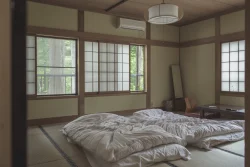
October 8, 2009
Sick of it All
A new rule promises to make public health insurance compulsory for foreigners living in Japan... or does it?
By Metropolis
So what does this mean if you’re paying into it yourself? That question’s easier to answer with shakai hoken, which is based on earnings and has standardized rates throughout the country. According to the SIA website, the combined health insurance, pension and unemployment insurance payment for someone making ¥300,000 per month comes to a little under ¥37,000.
Predicting what the bill will be like for people on kokumin kenko hoken is tougher: while the National Pension costs a flat ¥14,660 per month, health insurance premiums are determined by the relevant municipality based on a person’s taxable income from the previous year. Though the combined insurance and pension payments often work out similar to those for people on shakai hoken, the premiums vary widely between regions, and can increase sharply over the years.
Compare that to the premiums offered by expat health insurers and the difference is striking. For instance, Viva Vida!, which claims to be the only officially registered health and life insurance company for foreigners living in Japan, provides coverage to adults aged 18-55 for less than ¥60,000 per year. Other insurers give similar rates, and with little enforcement, foreigners have been able to duck out of joining public health insurance schemes altogether in favor of private coverage. Sure, it may not be legit, but if it gets the job done, why complain?
The pension scheme has also proved a tough sell for foreigners. It’s necessary to make payments for at least 25 years before you can draw a pension, and while people who leave Japan before then are entitled to reclaim some of the money they have paid in, the amount is capped at three years’ worth. To date, Japan has inked social security agreements with ten countries in an attempt to address this issue, but even in these cases, it’s seldom a simple matter of transferring the pension payments to your home country.
If individuals have warmed to the idea of avoiding the system altogether, they aren’t alone. Companies are required to pay half the cost of shakai hoken, and many with foreign workforces have sought ways of shucking this responsibility. In 2005, it was revealed that Nova Corp., then the largest employer of foreigners in Japan, had not been enrolling its teachers on shakai hoken at all, saving itself an estimated ¥1 billion a year in premium payments. In an effort to wriggle out of the situation, the company changed its teacher’s contracts so that they would work for 29.5 hours a week, or just under 75 percent of the hours of a full-time worker—considered the magic cut-off point at which a company has to sign an employee up to shakai hoken.
The revelation came after the Osaka-based General Union filed a complaint with the SIA about Nova, among other companies. The union has spent the past few years vigorously campaigning for businesses to enroll their employees on shakai hoken, and schools including AEON have since complied.
“We believe that regardless of the shortfalls—and there are many—public health and pension insurance are important public policy measures, and that our members should have coverage,” explains Dennis Tesolat, the GU’s General Secretary. “When we started our campaign back in 2004, one of our main points was that things would definitely change regarding health and pension coverage for foreigners, and that it’s something we had to deal with sooner rather than later.”
As it turns out, they were right. In June 2007, the Council for Regulatory Reform released one of many three-year plans for promoting reform. Buried in this tortuously phrased slab of bureaucratese is the recommendation that, along with payment of taxes, family situation and Japanese ability, the Immigration Bureau take into account whether or not foreigners are enrolled on public health insurance.
The new visa guideline was created in response to the report’s recommendations. Though it was initially reported as being a simple case of “no dues, no visa,” the actual situation is more complicated than that. When Metropolis spoke to a PR spokesperson at the General Affairs Division of the Immigration Bureau, who declined to give her name, she sounded genuinely surprised that the issue had garnered as much attention as it had.
“Legally, if someone isn’t working, they won’t be able to get a work visa, but somebody won’t be refused permission just because they aren’t signed up to shakai hoken,” she explained. “If somebody doesn’t show their [insurance card], they aren’t going to get denied permission. They’ll just be asked why they don’t have one.”
That’s it?
“Yes.”
Not exactly deportation, is it? Still, the guideline promises to introduce yet another gray area into an already opaque process, and some may prefer not to take their chances.
“It would appear that they want to use the guideline as a tool to disqualify those that an individual immigration official might feel doesn’t belong here,” says Ronald Kessler, the chairman and founder of the Free Choice Foundation. “In my opinion, the last thing in the world they’re actually thinking about is our health and welfare.”
Free Choice has been waging a high-profile campaign against the new guideline, running adverts in English-language newspapers and other publications, including this one.
“While Japan’s universal health care program is basically a good system, it was created with Japanese citizens in mind—as well it should be,” Kessler explains. “But, let’s face it: no one shoe fits every foot. With regard to health care, foreigners are typically confronted with problems that Japanese citizens are not.” He cites repatriation of remains, which can cost ¥1-2 million, as an example. “Who pays for this? It’s certainly not public insurance.”
In its adverts, Free Choice says that using immigration to enforce enrollment “takes the humanity out of medicine.” It hopes to secure a new guideline that explicitly allows foreigners to choose between public and private insurance plans.
The GU’s Tesolat disagrees. “The point they fail to mention is that it’s not a choice issue,” he says. “Public insurance only works when everyone is in the same system.”
While Free Choice works to reverse the decision, the GU is negotiating with the relevant government agencies to put pressure on companies to enroll employees in shakai hoken. Tesolat expresses concern that when the new guideline comes into effect next year, people may be forced by their company’s intransigence to enroll on kokumin kenko hoken, thus losing out on key benefits of shakai hoken such as wage protection. More importantly, anyone enrolling on kokumin kenko hoken must cover back payments for up to two years—a cost that is borne by the company in the case of shakai hoken.
So what’s the best option? Frustratingly, it’s still hard to say. What seemed in the summer like a simple choice—sign up or go home—has turned out to be a lot less clear-cut. Whatever the fairness of the new guideline, its vagueness about implementation leaves foreigners in an awkward position. Take the plunge, or take your chances.
For more information, see:
Free Choice Foundation (www.freechoice.jp)
General Union (www.generalunion.org)
Nambu Foreign Workers Cacus (http://nambufwc.org/)
Social Insurance Agency (www.sia.go.jp/e)
On paper, Japan’s healthcare system is pretty remarkable, promising universal coverage at a low cost: according to the latest WHO statistics, health expenditures account for 8 percent of GDP, compared with over 15 percent in the US. However, a report released by McKinsey & Company last November identified a number of problems which were “threatening the sustainability” of the system.
A spate of high-profile cases in which patients died after being turned away from multiple hospitals have highlighted the shortage of physicians, especially in ERs. However, the McKinsey report argues that overworking of specialists, a lack of financial incentives for hospitals to provide emergency care, and inappropriate use of ERs by the general public are also to blame for such incidents. Other more general problems include weak incentives to improve quality, a lack of clear accreditation standards for doctors, and over-utilization of healthcare: the average Japanese patient sees a doctor 14 times a year, compared to five times in the UK and four in the US.
Then there’s the issue of Japan’s every-grayer population. As the proportion of elderly people rises, health costs are predicted to increase substantially, just as the labor force—and the number of people paying into the insurance and pension schemes—is shrinking.







